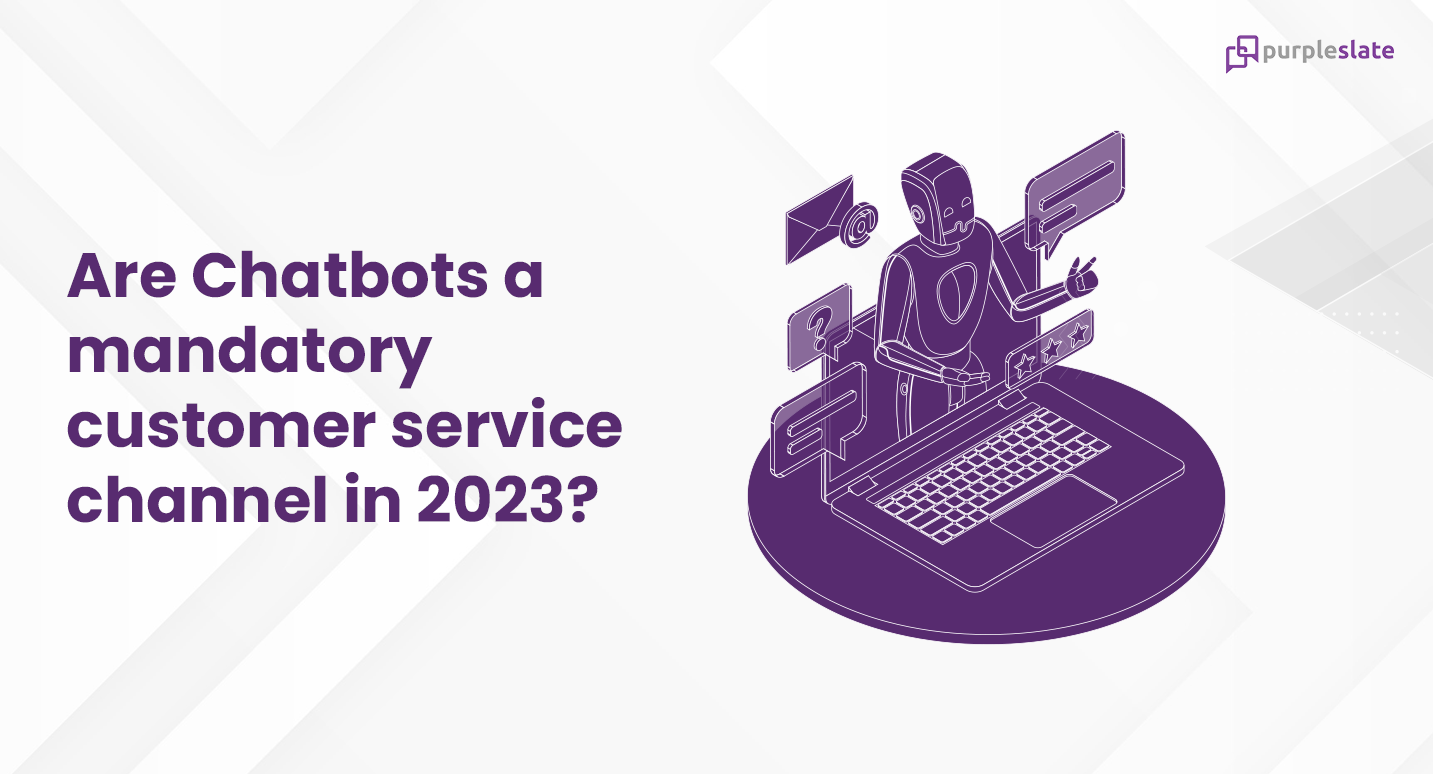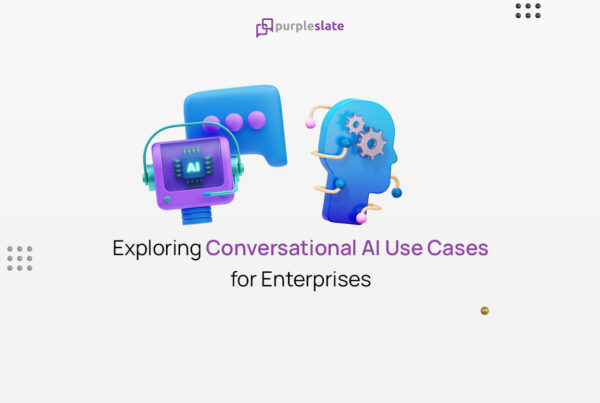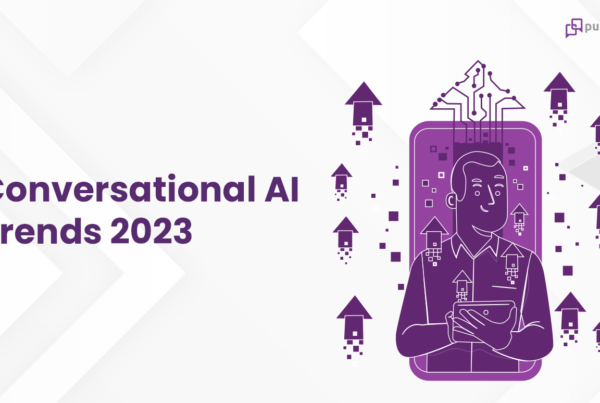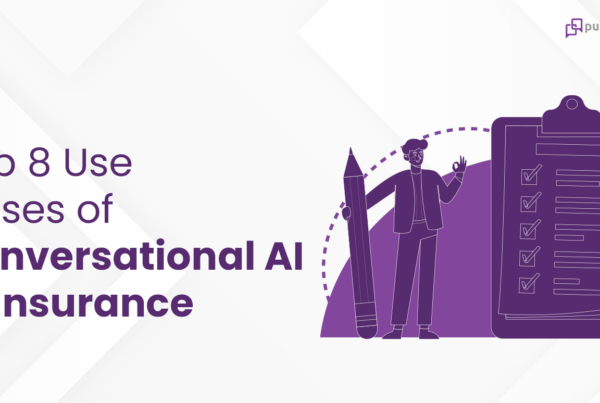
Introduction
Gartner has predicted that Chatbots will become the primary customer service channel by 2027. But with the ongoing trend, it is all set to become the mandatory customary service channel before the end of 2023. In 2022, Gartner surveyed the usage of conversational AI (CAI) as a customer service channel across business domains with an online presence. The result revealed that 54% are already using CAI for customer service channels.
To keep customers loyal and shape positive impressions of the business, customer service and support functions are essential. Businesses have started voluntarily deploying chatbots to handle customer support conversations, enhance the customer experience, and cut support expenses. More than 60% of online users are members of Gen Z, and they are extremely keen on chatbot technology. Chatbots are the ideal option for millennials who want to solve customer service concerns by themselves.
Below are the reasons why customers prefer conversational AI as their preferred support channel
- Comfortable served by a chatbot as long as the bot responds to their questions in real time and helps them quickly resolve their problem.
- Comfortable handling an issue without a human agent.
- Prefer to use an instant customer service bot rather than wait for human agents to answer their requests.
- Prefer using chatbots when looking for answers to simple questions or FAQs.
Chatbot adoption is faster in larger enterprises than in smaller ones. Their market segment has a 46%+ market share of chatbots and is expected to surge. Business owners all over the world are keener to incorporate them into their websites, mobile apps, and messaging platforms because it has been demonstrated that they reduce operating costs.
Globally, there are approximately 2 billion digital buyers (Salesforce). Given the present tendencies that accelerated during the epidemic, there will be even more customers in the future who need assistance. As a result, customer service bots appear to be a viable option for organizations looking to scale or enhance customer support without raising expenditures or staff headcount.
By 2027, the market for chatbots is anticipated to generate $454.8 million in revenue, increasing from $40.9 million in 2018. (Statista)
Each year, businesses spend nearly $1.3 trillion on customer demands. Chatbots can assist in lowering the cost of customer service by 30%. (IBM)
64% of businesses that use AI chatbots spend the majority of their time fixing critical problems. (Salesforce)
Chatbots now can provide a more personalized client experience thanks to developments in chatbot technology and machine learning. Customers hop from one channel to another while browsing for products, according to the shopping trends. This indicates that the more touchpoints business provides, the more likely the customer will come across the company’s offers and choose their products.
The millennial customer’s tolerance for waiting is decreased, making it harder to manage good customer service across diverse selling channels. Chatbots can assist in achieving the immediate response time that customers anticipate from businesses in response to their sales inquiries.
Self-service and Omni-channel Deployment
Chatbots recognize the context of a customer’s journey and enable self-service across digital channels. With helpful bot support, customers can simply get answers on their own. Bots can recognize different types of conversations, such as sales and customer service, and route them to the relevant departments or staff. Chatbots can interact with your customers via email, a chatbox on your website, or messaging channels like Facebook Messenger or WhatsApp, providing your business with the 24/7 customer care superhero in need. Bots can speak with one another and move conversations from one Bot to another based on the flow of the conversation, all while maintaining complete transparency from the customer’s perspective.
Delightful first-contact experience
An AI chatbot is a first-response tool that greets, engages, and serves customers in a friendly and familiar way. When speaking with chatbots, 59% of survey respondents expect a response within 5 seconds or less — something that would be difficult for a human to meet. Multiple customers asking the same questions don’t always get consistent service from live agents. But chatbots will happily deliver the correct answers every time.
Context-driven Personalized interactions
To provide more individualized experiences, add field-level validation and integrate with existing back-end or third-party systems. By customizing the conversation to the customer’s precise needs, chatbots enhance the user experience. With personalization, chatbots can offer customers offers based on their buyer’s journey, propose products based on their queries, and even recommend the best course of action based on their needs.
Reduction in operational costs
Bots provide prompt and precise answers to common questions, saving you money. Chatbots assist in reducing the enormous volume of repetitious FAQs received via email, message, and other channels by allowing customers to find answers on their own and guiding them to quick solutions. They’re a low-cost solution to provide 24/7 help that never sleeps—on weekends, holidays, and in all time zones.
Connected experience
It’s crucial to always provide customers with a method to escalate a conversation to a customer service representative. A frustrating situation is when a consumer has a good reason to speak to a human representative but is unable to do so. Chatbots with the right AI capabilities can detect whether a customer’s query demands assistance from a real person.
Chatbots connect to support systems to send information to automate ticket creation and provide conversation history to agents when their expertise is required. Chatbots may even be able to provide answers, knowledge base articles, and other resources to human agents. When an agent receives a sophisticated help request from a bot conversation, they will be equipped to reply to tickets with the correct context. This integrated experience also provides a unified picture of how the bot provides a positive impact on agent performance and support metrics.
Conclusion
In 2023, chatbots will save the financial, healthcare, and retail sectors up to $11 billion annually (Juniper Research). It is the cost save margin that makes a difference between a business making profit and loss. To keep the business going, making Chatbot a service channel has become mandatory and indispensable.




